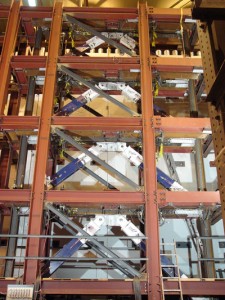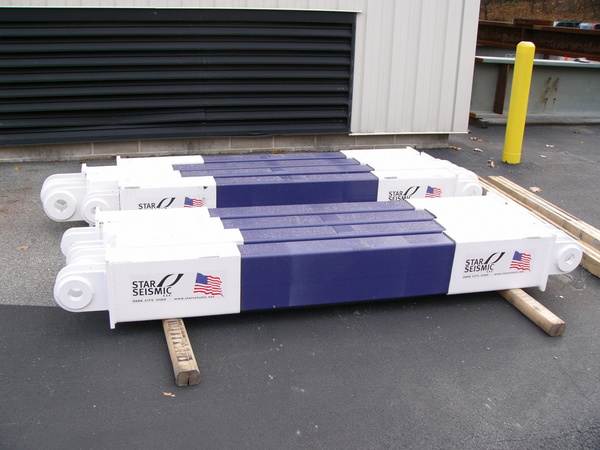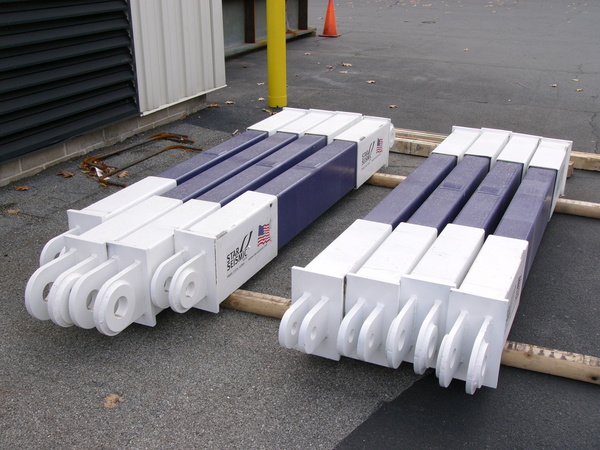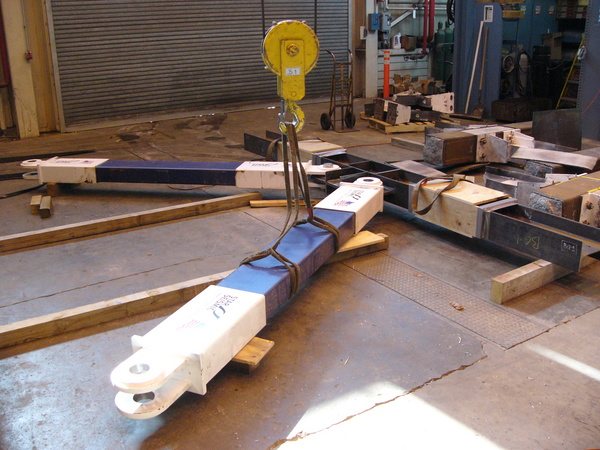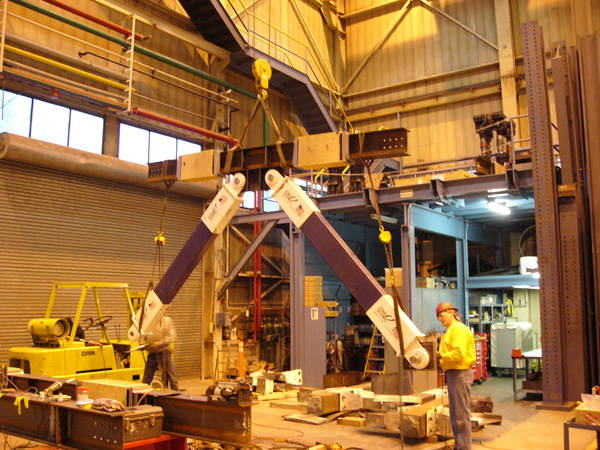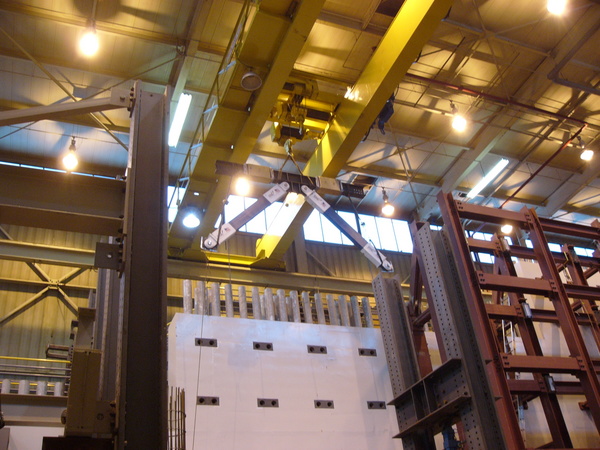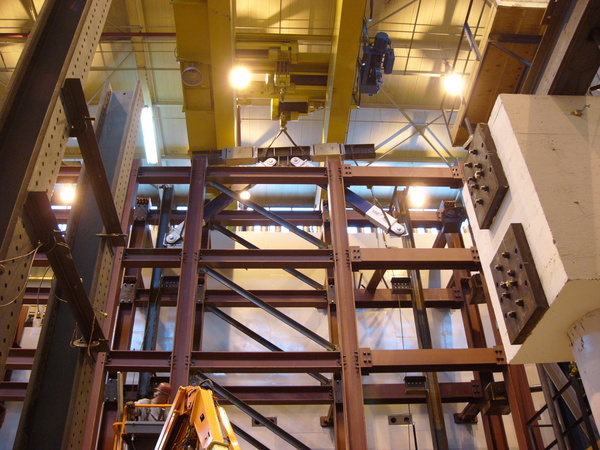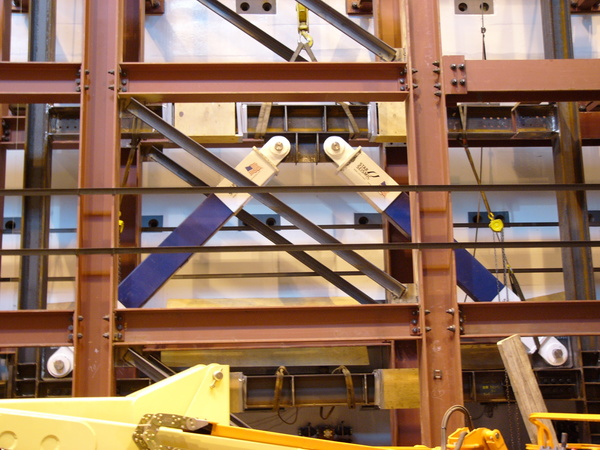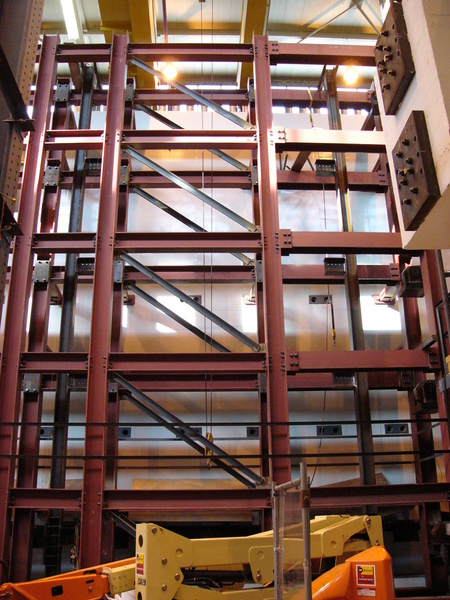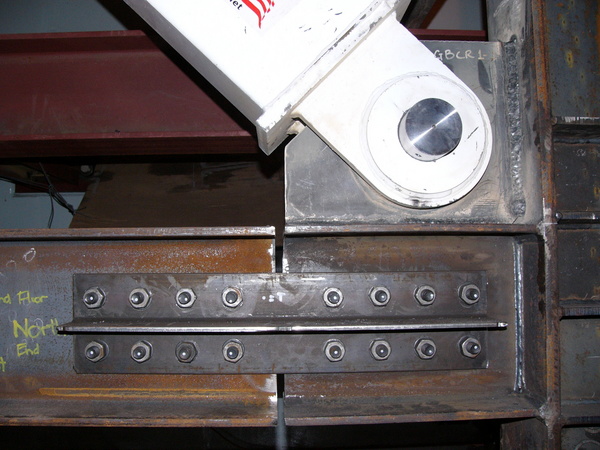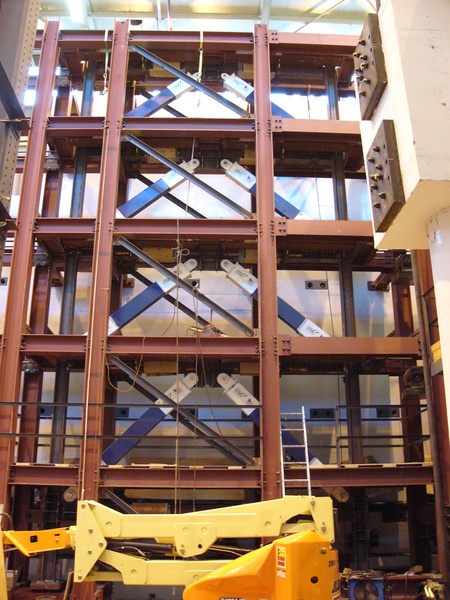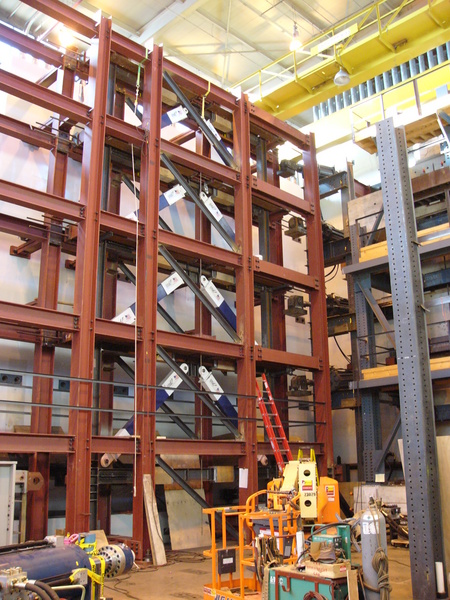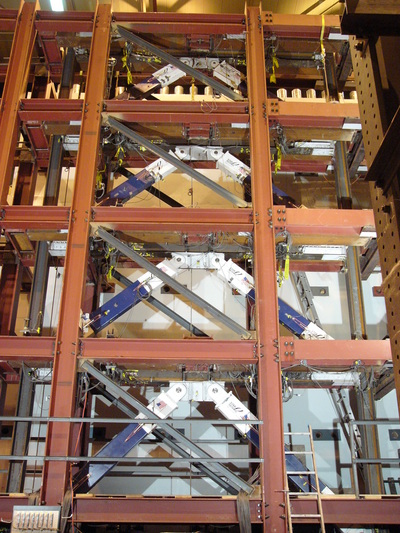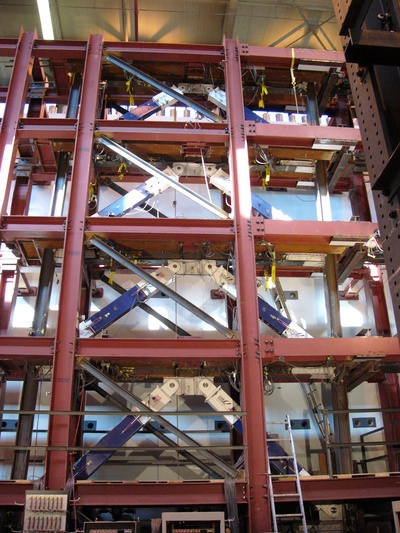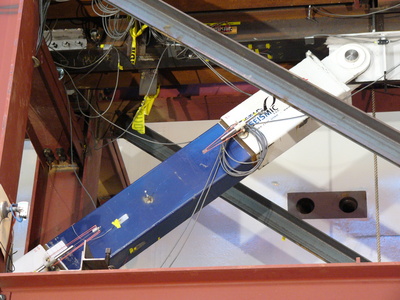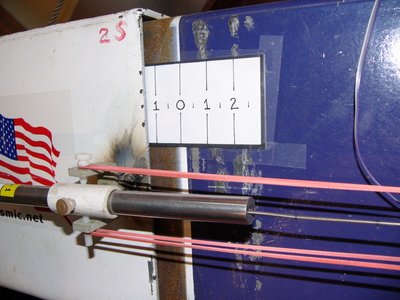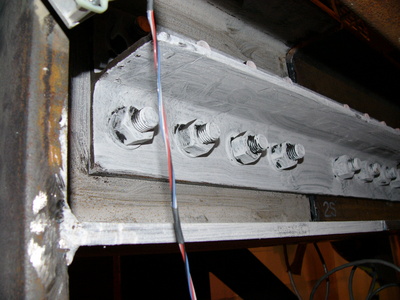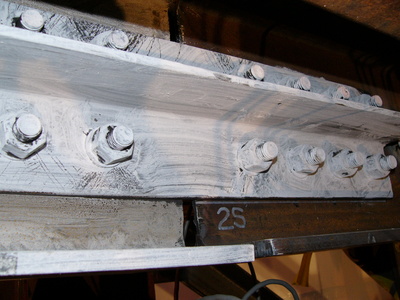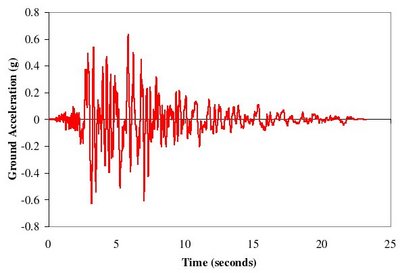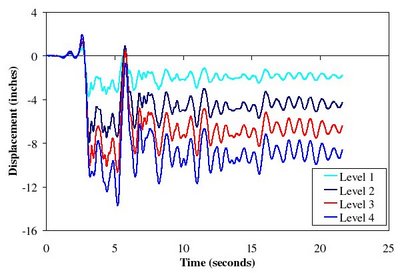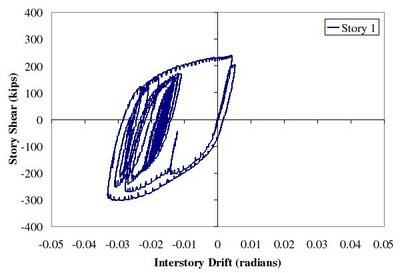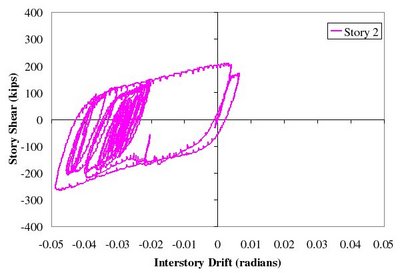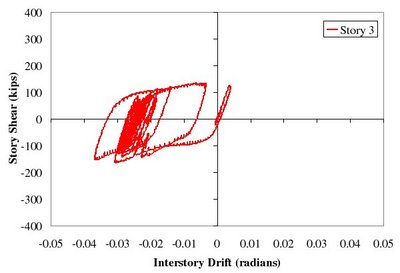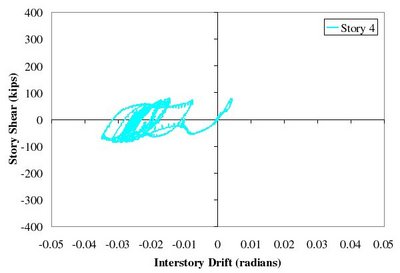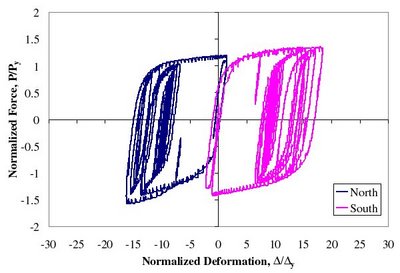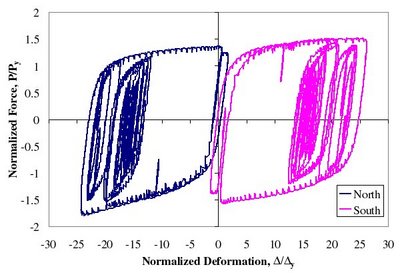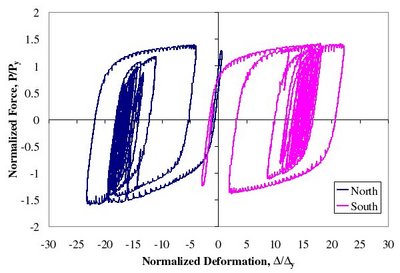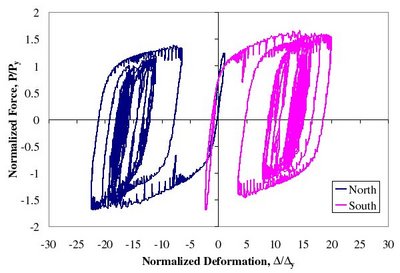Analytical and Large-Scale Experimental Studies of Earthquake-Resistant Buckling-Restrained Braced Frame Systems
Project Overview
Analytical and experimental studies on the seismic behavior of buckling restrained braced frames (BRBFs) are being conducted at the ATLSS Center, Lehigh University. The objectives of these studies are to investigate the seismic performance of the BRBF system, to evaluate existing design criteria, and to calibrate analytical models. A 4-story prototype building was designed with BRBFs as the lateral load resisting system. The columns and beams in this frame are wide-flange structural steel sections. Design criteria were taken from the IBC 2000 and the AISC/SEAOC Recommended Design Provisions for BRBFs. A 1-bay prototype BRBF, representing one-quarter of the lateral load resisting system in one direction, was extracted from the prototype building for analysis. The analysis program DRAIN-2DX was used to model the prototype frame including material and geometric nonlinearities. The force-deformation relationship used in the buckling-restrained brace (BRB) model incorporates both isotropic and kinematic hardening. Nonlinear time history analyses were conducted using an ensemble of ground motions consisting of natural earthquake records and one artificial earthquake record. The earthquake records were scaled to two different seismic input levels: Design Basis Earthquake (DBE) and Maximum Considered Earthquake (MCE). A statistical summary of the analysis results was developed for both seismic input levels. Performance objectives were defined and used to evaluate the analysis results. The life safety performance level was the target level for the DBE and the collapse prevention performance level was the target level for the MCE. Acceptable BRBF behavior was observed at both seismic input levels. A large-scale BRBF experimental investigation is in progress. The frame which will be tested is a 3/5-scale model of the prototype BRBF. The test frame is four stories tall with a modified basement level. The experimental investigation will execute a series of hybrid pseudo-dynamic tests on the test frame to simulate seismic loading at various hazard levels. The series of tests will generate structural response ranging from the serviceability limit state to the collapse limit state. The results from the experimental investigation will be used to verify the analytical studies and to calibrate the analytical model of the BRBF. The experimental program will generate new information about the behavior and performance of multi-story BRBFs.
Summary
As part of the integrated analytical and experimental research program on buckling-restrained braced frames (BRBFs) being conducted at the ATLSS Center, Lehigh University, a large-scale BRBF was tested using the pseudo-dynamic method. The test frame was subjected to multiple earthquake simulations using the explicit Newmark algorithm. A hybrid testing approach was implemented to account for the P-Δ effects associated with the gravity load carried by the prototype building’s gravity frames. Four earthquake simulations were conducted:
- A frequently occurring earthquake (FOE) – 50% probability of being exceeded in 50 years
- A design basis earthquake (DBE) – 2/3 of the MCE
- A maximum considered earthquake (MCE) – 2% chance of being exceeded in 50 years
- An aftershock – 80% of DBE (simulates a large earthquake following soon after the MCE)
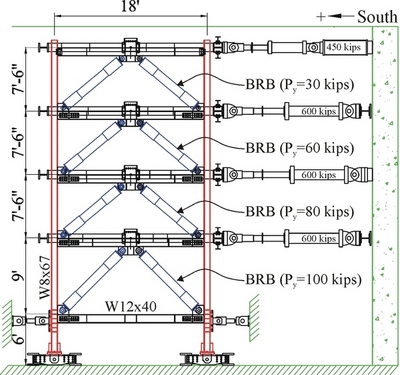
Test Setup
Timelapsed Construction of BRBF
Throughout the experimental program, the test frame performed well and exhibited no signs of distress. Significant drift demands were sustained with almost no damage. The beam-column-brace connections, which minimize connection moment and allow rotation, exhibited excellent performance and sustained only minor yielding at very large story drifts. Story drifts near 5% and BRB maximum ductility demands over 25 were observed in the MCE simulation. No stiffness or strength degradation was observed. Although residual drifts were large, over 2% residual roof drift after the MCE simulation, the test frame retained its full load-carrying capacity and withstood a significant aftershock simulation following the MCE. This experimental program demonstrated that a properly detailed BRBF is capable of withstanding the largest anticipated seismic input and maintaining its structural integrity. Selected test results and photographs from the MCE simulation are presented below.


